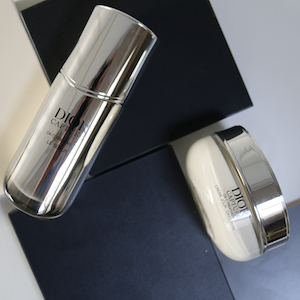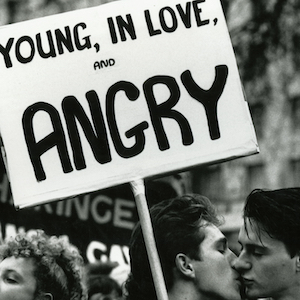The Colour of Flowers are Glorious and Beautiful
By Jo Phillips
Did you know that Brazil’s flora is rich and diverse, with many unique plants? This one country has the highest number of recorded plant species in the world, with about 30% of those species being endemic to this South American land. The shapes and colours so vibrant and dynamic often used as a shortcut to a reminder of the powerful life force of the country. Think of the spa brand Granado and its beautiful artworks that do so much to encapsulate the passion of the company and its native land. Find out more in The Colour of Flowers are Glorious and Beautiful.
Image on left hand side Djanira, Flying a Kite, 1950. Oil on canvas, 113 x 94 cm. Banco Itaú Collection. Photo: Humberto Pimentel/Itaú Cultural. © Instituto Pintora Djanira
Along the humid coastline of Brazil find rich and juicy mangoes, cajú, guava, coconut, and jack-fruit trees. Within the savanna, sparse forests, and “campos cerrado” explore various woody shrubs, the staghorn fern, and an abundance of herbs, especially grasses.
In the southern states are exotic flowers, such as papagaias; flowering trees, such as the Quaresma, which blossoms during Lent; and the popular ipê tree with its yellow petals, planted on some São Paulo streets.




The Amazon rainforest is host to a great variety of tropical fauna, including hundreds of types of macaws, toucans, parrots, and other brightly coloured birds; brilliant butterflies;
It’s safe to say that the colours of the plant life in Brazil are vibrant, diverse and dynamic. Like a botanic representation, the colours are the smiles of nature, and the flowers and fauna represent Brazil’s rainbow nation.



Brazil’s population is made up of and identifies as “Pardo” (mixed), making up around 45.3% of the population, followed by “Branco” (white) at 43.5%, and “Preto” (black) at 10.2%. This means that the majority of Brazilians have mixed ancestry, making it a wonderfully cosmopolitan and richly rainbowed nation.
This is reflected in the world of art with a new exhibition at the Royal Academy in London. Brasil! Brasil! The Birth of Modernism is a major new exhibition, that features over 130 works from the 1910s to the 1970s by ten important Brazilian artists and captures the diversity of Brazilian art at this time.
As much as Brazil looked to the world in the early 20th Century it also looked within. The Manifesto Antropofago (Cannibalist Manifesto) was an essay published in 1928 by a key figure in the cultural movement of Brazilian Modernism poet and polemicist Oswald de Andrade.
His main argument proposed that Brazil’s history of “cannibalizing” other cultures was its greatest strength while playing on the modernists’ primitivist interest in cannibalism was an alleged tribal rite. Cannibalism became a way for Brazil to assert itself against European post-colonial cultural domination.
Vicente do Rego Monteiro, Archer, 1925. Oil on canvas, 108 x 137 cm. Private collection, São Paulo, Brazil. Courtesy of Almeida & Dale Galeria de Arte / Photo: Sergio Guerini. © Vicente do Rego Monteiro
And so by the early twentieth century in Brazil, artists were adapting contemporary trends, international influences and artistic traditions to create their new take on modern art; art informed by and celebrating its distinct, vibrant cultures, identities and landscapes.
Brazilians were no longer interested in following Europe and North America, not just in terms of literature, poetry, theatre, music and design but also, significantly, in art. Brazil was seeking its own identity, one that was freed from external influences and that reflected the reality of life in Brazil.
Artists began to emerge in the 1910s wanting to be modern, reflecting new forms of expression that many had been exposed to in Europe (mainly in France between the wars) and in the US. These artists returned to Brazil reflecting these modern tendencies but adapting them to create new forms of art that celebrated their national identity.
Brasil! Brasil! The Birth of Modernism is a unique opportunity to see a broad variety of work by these ten significant artists together, who represent the particularly diverse nature of such a multi-cultural society and vividly illustrate this century of cultural change in Brazil.
Tarsila do Amaral, Lake, 1928. Oil on canvas, 75.5 x 93 cm, Collection of Hecilda and Sérgio Fadel. Photo: Jaime Acioli © Tarsila do Amaral S/A.
The majority of works in the exhibition come from rarely seen Brazilian private collections and are shown alongside those drawn from Brazilian public collections, most of which have never been exhibited in the UK.
Just like this population, flora and fauna, the 10 artists involved in the exhibition are diverse as are the works on show. These include pioneers of early Brazilian Modernism, a movement spearheaded by Anita Malfatti followed by Vicente do Rego Monteiro, the Jewish Lithuanian emigré Lasar Segall, Candido Portinari and Tarsila do Amaral, now internationally celebrated as a leading female figure of Brazilian Modernism.
The exhibition also includes the self-taught artists Alfredo Volpi and Djanira, an artist of indigenous descent, Afro-Brazilian artist Ruben Valentim, the early Neo-Concrete polymath Geraldo de Barros, and the artist and architect Flávio de Carvalho, who was also one of Brazil’s first performance artists.
Geraldo de Barros, Arrangement of Three Similar Shapes within a Circle, 1953. Enamel over kelmite on eucatex, 59.5 x 59.5 cm. Collection Lenora and Fabiana de Barros. Courtesy Luciana Brito Galeria, São Paulo. Photo: Gustavo Scatena, Imagem Paulista. © Geraldo de Barros
Collectively the works take the visitor on a journey through 70 years of a new art in Brazil which moves from figuration to abstraction. From earthy tones to bright vibrant colours the works help define an underlying consciousness that came through the country as it found its feet away from both Europe and North America. Read between the shapes and patterns and see the history of a nation with its diversity, its layers and its responses to its DNA.
Lasar Segall, Banana Plantation, 1927. Oil on canvas, 87 x 127 cm. Collection of the Pinacoteca do Estado de São Paulo. Purchased by the Governo do Estado de São Paulo, 1928. Photo: Isabella Matheus. © Lasar Segall (Vilnius, Lituânia, 1889 – São Paulo, Brasil, 1957)
One of the key sponsors of this excellent exhibition is Granado, Brazil’s oldest pharmacy, now a lifestyle spa brand. Granado honours its strong heritage through a unique partnership with the Royal Academy, in sponsorship of Brasil! Brasil! The Birth of Modernism
It first opened its doors in 1870 in Rio de Janeiro. The owner of the apothecary, the Portuguese José Antonio Coxito Granado, produced remedies, cosmetics and other products made from plants, herbs and native flowers of Teresópolis, a mountainous region near Rio de Janeiro, where he had a small farm. Dedicated to cultivating and discovering local natural solutions to ailments, the company also compiled the first official register of Brazilian medicinal plants and herbs.




This connection to its native plants can be seen on the packages of the beauty items on sale, as it pays homage to the beauty of the rich nature of Brazil. Nearly 95% of Granado’s design is done in-house by teams in Rio de Janeiro. Although, occasionally they call on designers such as Gabriel Azevedo, an illustrator from Recife in the Nordeste, or Laurindo Feliciano, a Brazilian based in France who is an expert in vintage collages.
Since its inception, Granado has continued to evolve to offer an extensive collection of modern and sustainable lifestyle products and fragrances, from colognes, to eaux de toilette and eaux de parfums.
Granado’s perfumes celebrate the brand’s colourful Brazilian heritage whilst taking a journey through its century-long history. Each perfume transports to a chapter of the house’s journey, evoking memories and paying homage to the brand’s long-standing legacy.
In addition to sponsorship of the exhibition, Granado can also be found in the Royal Academy’s official shop including Granado Bossa Eau de Toilette. Citric and marine notes reflect the freshness of the sea breeze, while the bouquet of solar flowers and notes of coconut offers a creamy and delicate base. The fragrance is rounded out by all the comfort and elegance of musk and cashmere wood, resulting in a floral, solar, fresh yet comfortable creation.
Granado Bossa 4 Bar Soap Kit, Granado Carioca 4 Bar Soap Kit. Both contain 4 luxury soap bars, each of which are 77% made of natural origin ingredients, leaving the skin both soft and nourished. Formulated with vegetable glycerin, the soaps offer the perfect gentle cleanse for either hand or body and also contain murumuru butter and coconut oil to deeply hydrate the skin.
And Granado Carioca Eau de Toilette. Carioca Eau de Toilette. known for its perfectly balanced combination of citrus and floral notes. Just like Rio, it symbolises the union of forests with the comforting sea breeze and can be characterised by a distinct lightness, making it a fragrance that is both striking and comfortable.
Highlighting 70 years worth of modern art in Brazil, the exhibition provides the perfect opportunity for visitors to immerse themselves within the diversity and vibrancy of Brazil’s cultural heritage; a heritage that remains at the heart of Granado’s DNA since its creation in 1870.
In Brazil artists were adapting contemporary trends, international influences and artistic traditions to create a new modern art; art informed by and celebrating its distinct, vibrant cultures, identities and landscapes.
Brasil! Brasil! The Birth of Modernism 28 January – 21 April 2025 020 7300 8090 or www.royalacademy.org.uk Royal Academy of Arts, Burlington House, Piccadilly, London W1J 0BD.
Find all you want to know about Granado.uk here
If you enjoyed reading The Colour of Flowers are Glorious and Beautiful then why not read The Man Looks Stylist Here
.Cent Magazine London. Be Inspired; Get Involved







